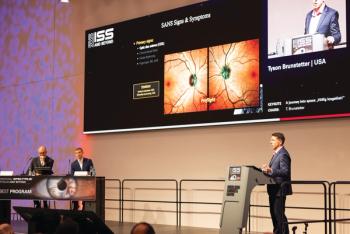
C3-R: the present and the future
You can leave the epithelium intact, say Dr Roberto Pinelli and Dr Tarek El Beltagi
Key Points
It was Professor Theo Seiler who first proposed applying the principally dental and orthopaedic concept of cross-linking to corneal collagen fibres as a treatment for ectasia; specifically, keratoconus (KC).
The procedure works because a combined use of riboflavin (vitamin B2) and ultraviolet-A (UV-A) irradiation induces a strengthening of corneal stroma, by creating, between the collagen fibres, new stromal bonds as a result of the UV-A radiation's effect on the unstable riboflavin molecule.
It was initially believed that the C3-R treatment required epithelial debridement to improve riboflavin penetration in the stroma, although more recently the treatment may be performed with the epithelium left intact. There remain differing opinions regarding the removal of the epithelium (or not): there are those who believe that, with the epithelium left on, the penetrating capability of riboflavin could be slower and the treatment less efficacious.
Can we prove it?
Newsletter
Get the essential updates shaping the future of pharma manufacturing and compliance—subscribe today to Pharmaceutical Technology and never miss a breakthrough.














































